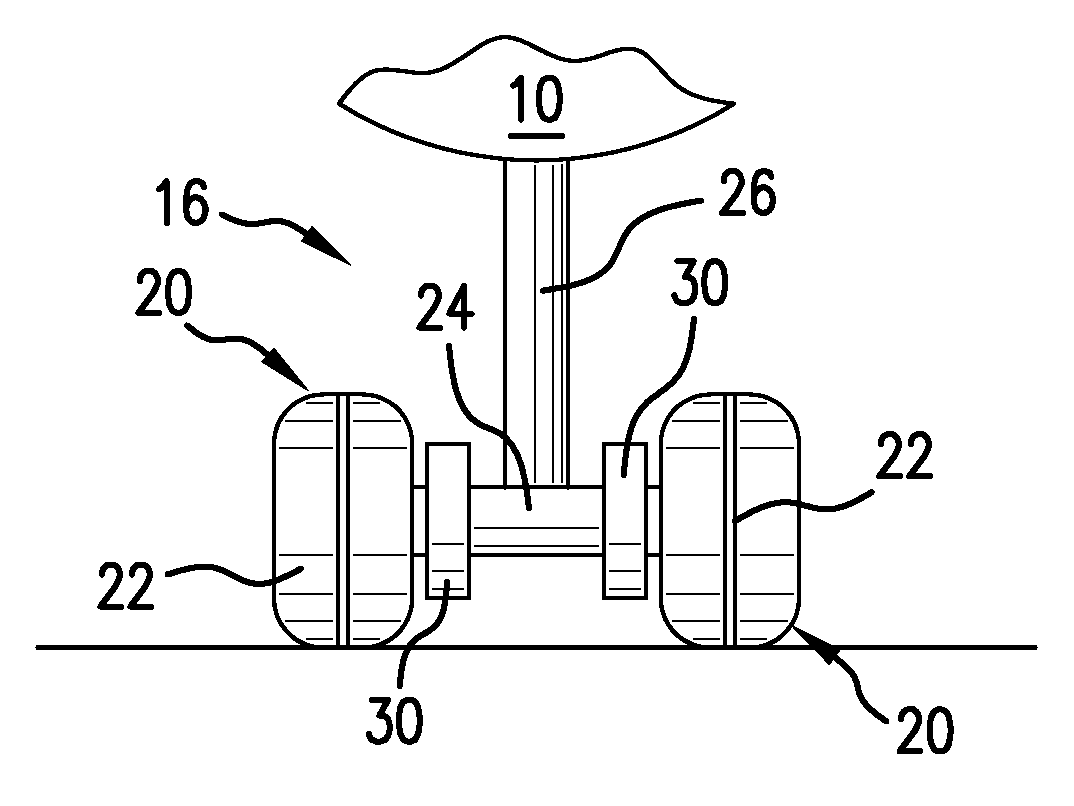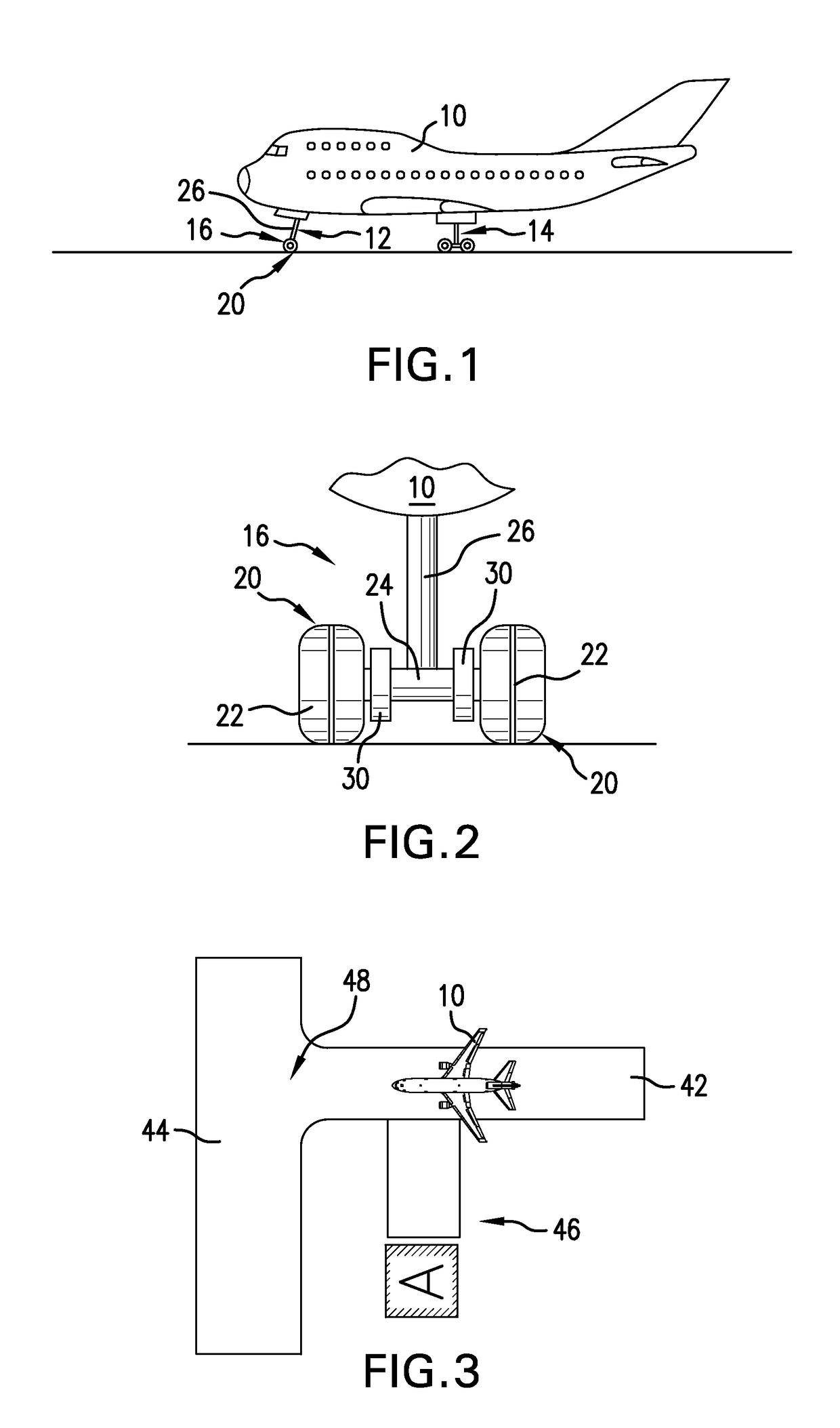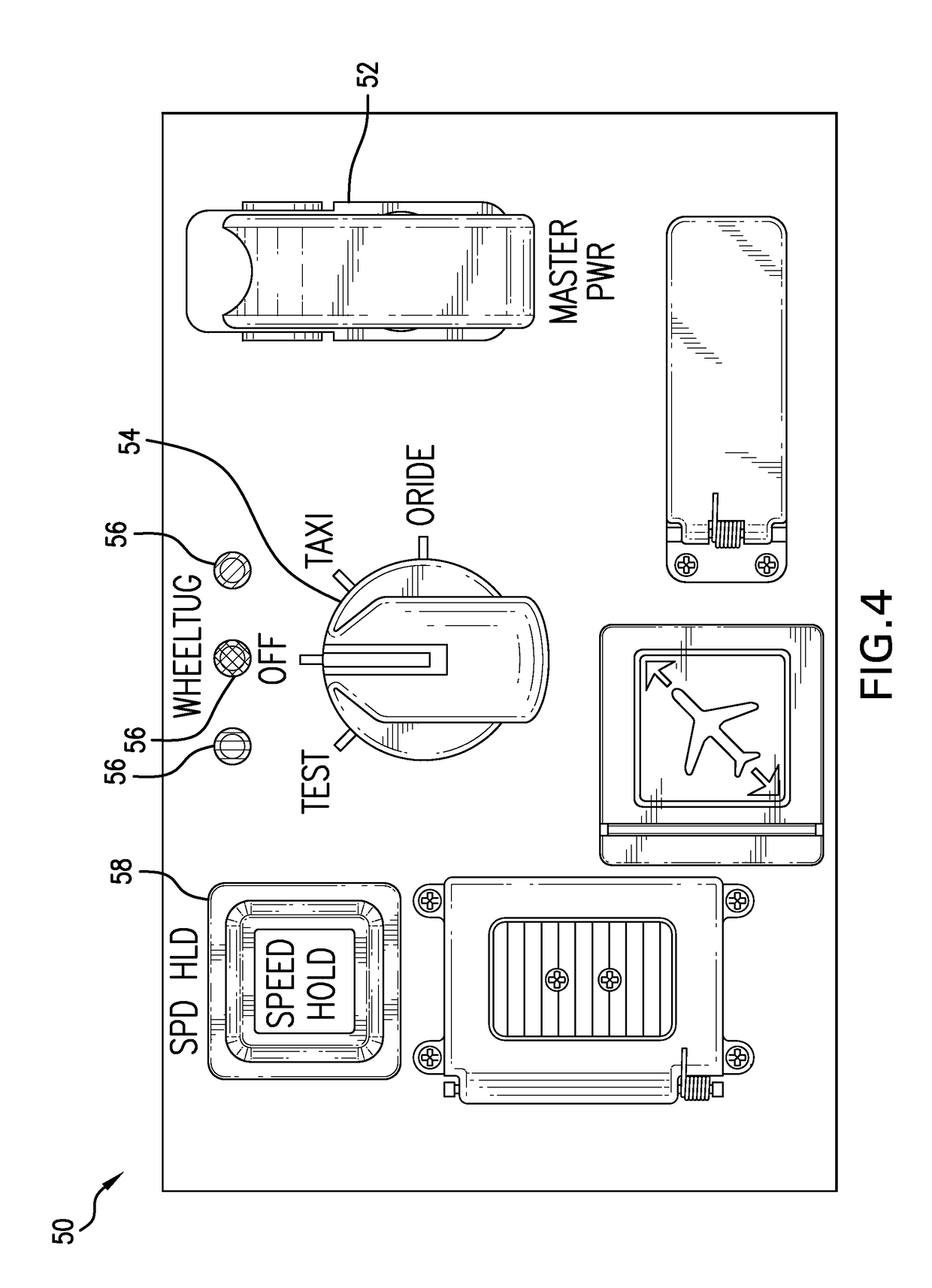System and method for maintaining aircraft ground travel speed and direction
a technology for maintaining aircraft ground speed and direction, applied in vehicle position/course/altitude control, process and machine control, instruments, etc., can solve problems such as increased risk of ground incidents involving aircraft, ground vehicles, passengers and ground personnel, and reduced maneuvering space in the ramp area
- Summary
- Abstract
- Description
- Claims
- Application Information
AI Technical Summary
Benefits of technology
Problems solved by technology
Method used
Image
Examples
Embodiment Construction
[0029]The system and method of maintaining aircraft ground travel speed of the present invention permits a level of control over aircraft ground travel and taxi not heretofore possible. While autopilot systems that control aircraft travel during flight and leave the pilot and cockpit crew free to handle other flight tasks have long been available, similar systems have not been provided to control aircraft ground travel. When an aircraft touches down on an airport runway, the pilot and cockpit crew must direct the moving aircraft along the airport's runway system to an ultimate parking location. The distance and runway route to be traveled depends on the specific airport and can vary quite widely. Some airports have a limited number of runways that can be easily navigated with few turns or stops, and other airports require the cockpit crew to negotiate a more complex path between landing and arrival at a gate or other parking location. Whether an aircraft's taxi path is simple or con...
PUM
 Login to View More
Login to View More Abstract
Description
Claims
Application Information
 Login to View More
Login to View More - R&D
- Intellectual Property
- Life Sciences
- Materials
- Tech Scout
- Unparalleled Data Quality
- Higher Quality Content
- 60% Fewer Hallucinations
Browse by: Latest US Patents, China's latest patents, Technical Efficacy Thesaurus, Application Domain, Technology Topic, Popular Technical Reports.
© 2025 PatSnap. All rights reserved.Legal|Privacy policy|Modern Slavery Act Transparency Statement|Sitemap|About US| Contact US: help@patsnap.com



